Abstract
Irradiation of tris-washed chloroplasts with moderate intensities of red light caused a partial bleaching of chloroplast pigments and an inhibition of the hydroquinone-supported photoreduction of NADP. The presence of an electron donor for photosystem 2 (PS2) during the irradiation prevented the bleaching and inhibition. It is concluded that the strong oxidant produced by PS2 accumulates in tris-washed chloroplasts during irradiation and an electron donor for PS2 protects against the photooxidation reactions.
Full text
PDF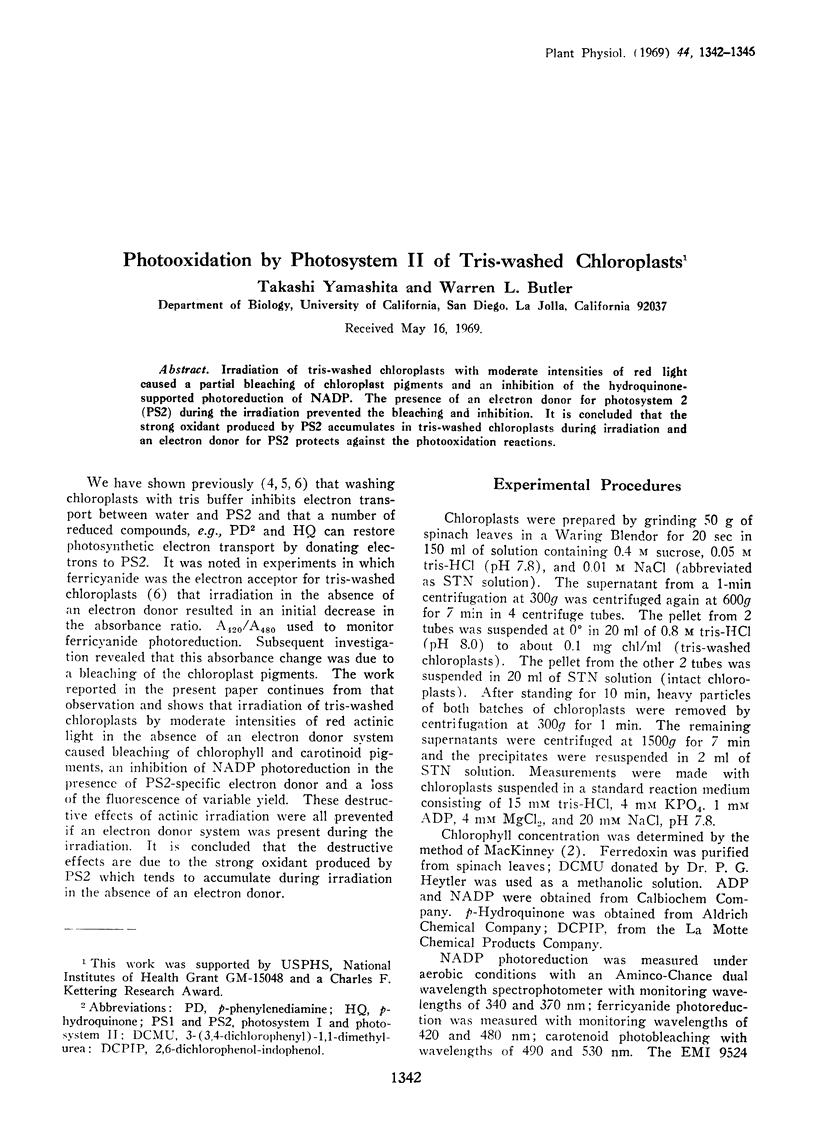
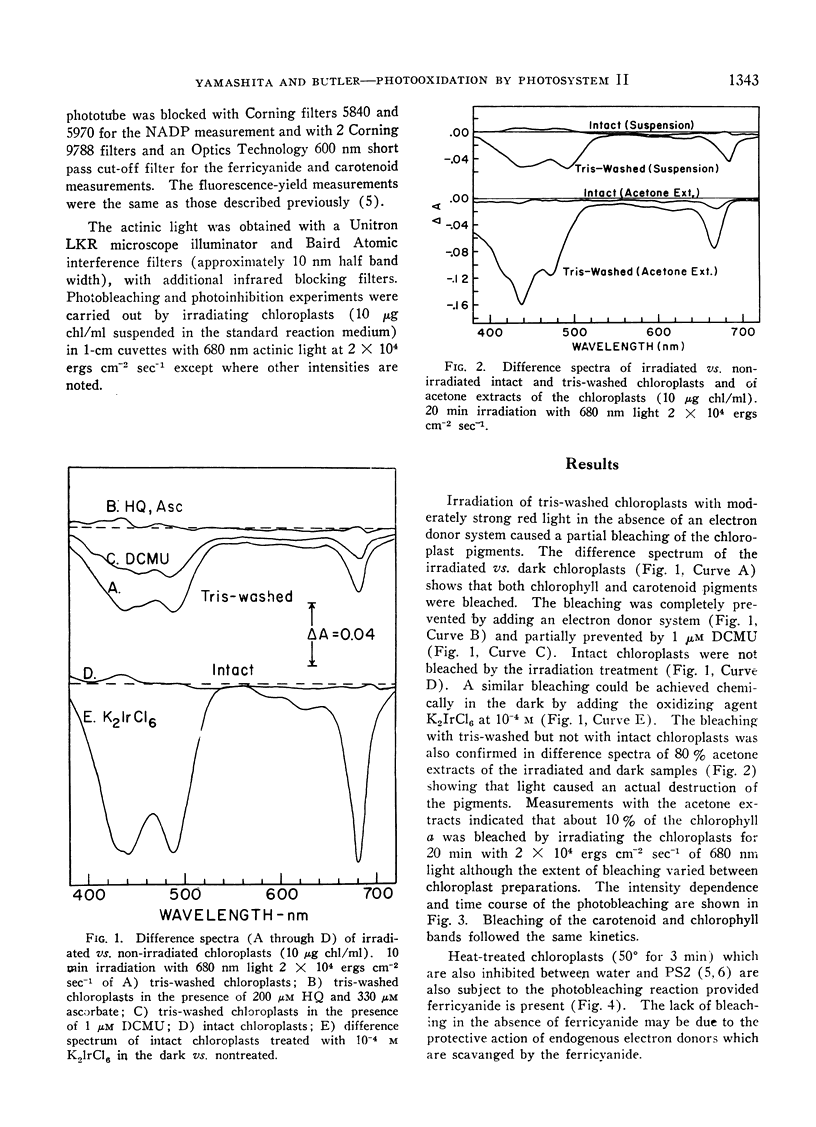
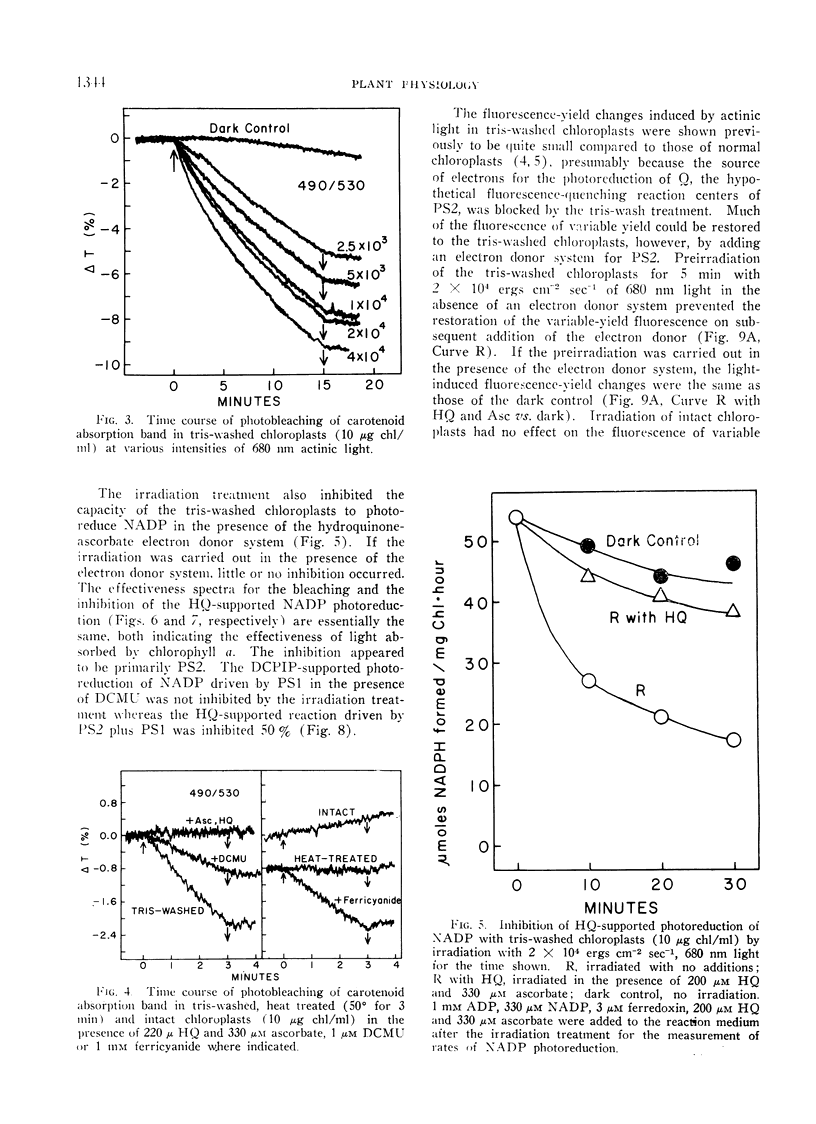
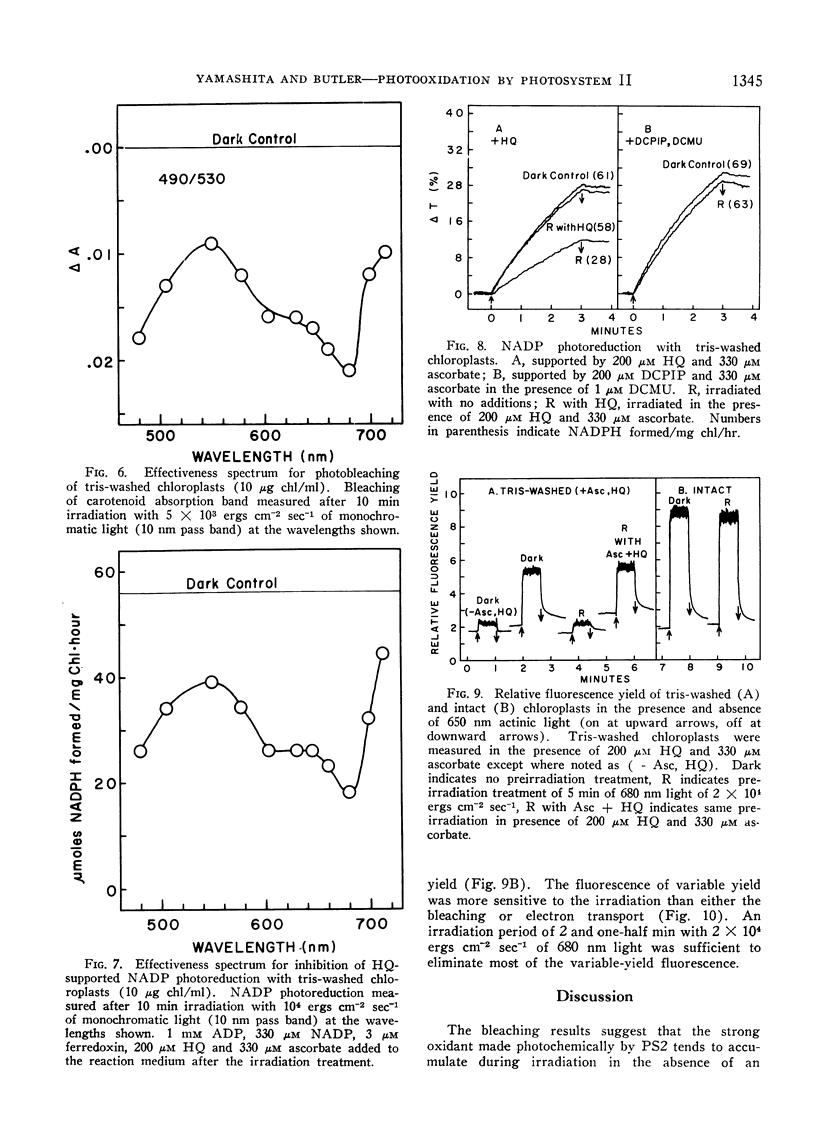
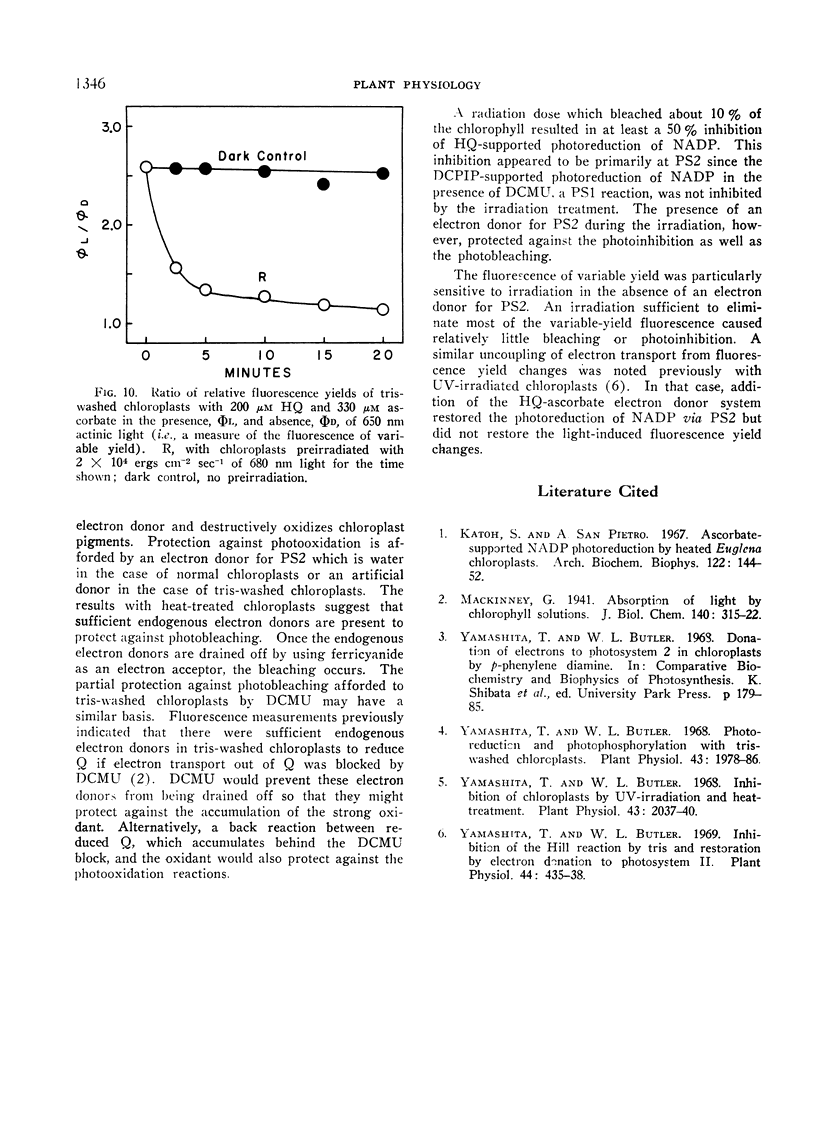
Selected References
These references are in PubMed. This may not be the complete list of references from this article.
- Katoh S., San Pietro A. Ascorbate-supported NADP photoreduction by heated Euglena chloroplasts. Arch Biochem Biophys. 1967 Oct;122(1):144–152. doi: 10.1016/0003-9861(67)90133-6. [DOI] [PubMed] [Google Scholar]
- Yamashita T., Butler W. L. Inhibition of chloroplasts by UV-irradiation and heat-treatment. Plant Physiol. 1968 Dec;43(12):2037–2040. doi: 10.1104/pp.43.12.2037. [DOI] [PMC free article] [PubMed] [Google Scholar]
- Yamashita T., Butler W. L. Inhibition of the Hill Reaction by Tris and Restoration by Electron Donation to Photosystem II. Plant Physiol. 1969 Mar;44(3):435–438. doi: 10.1104/pp.44.3.435. [DOI] [PMC free article] [PubMed] [Google Scholar]


